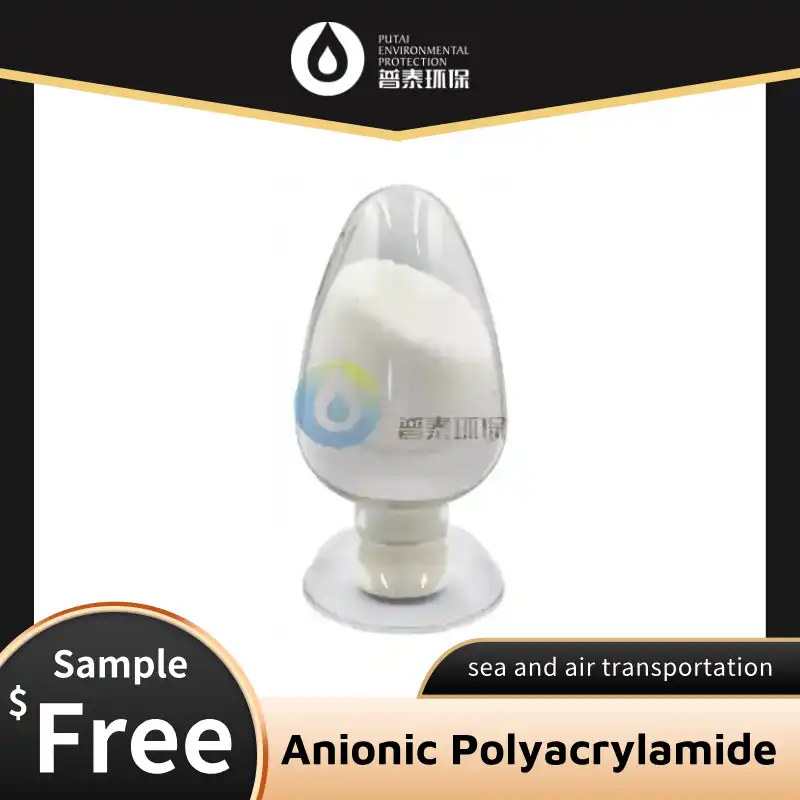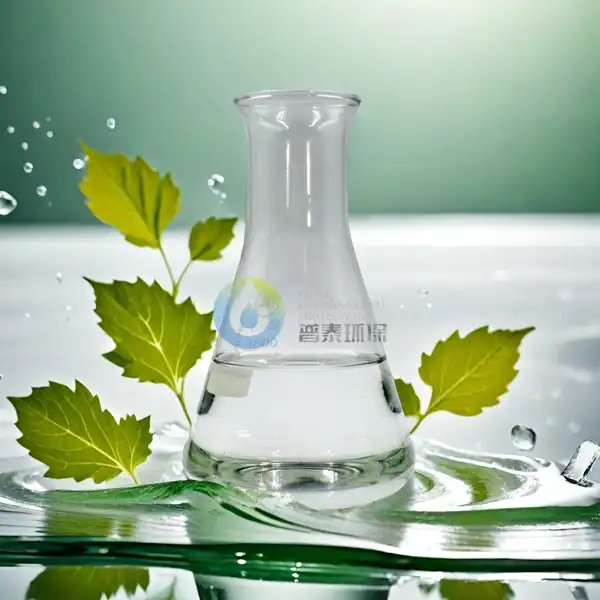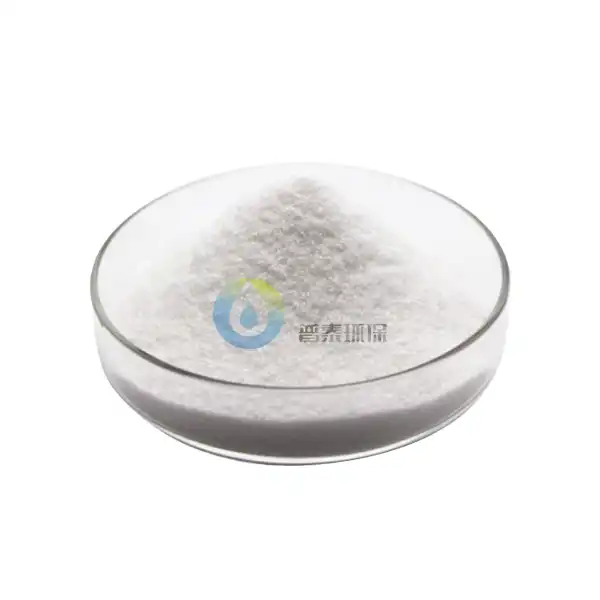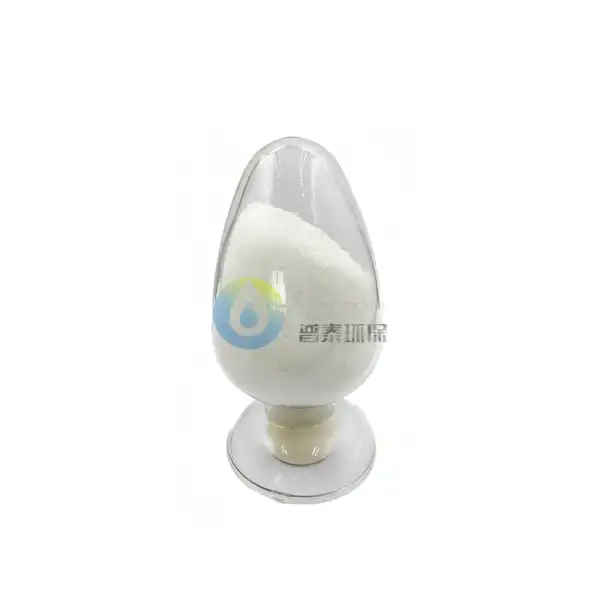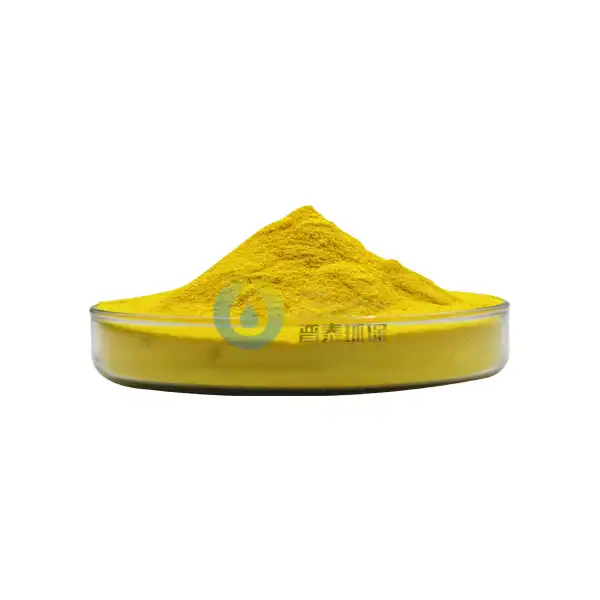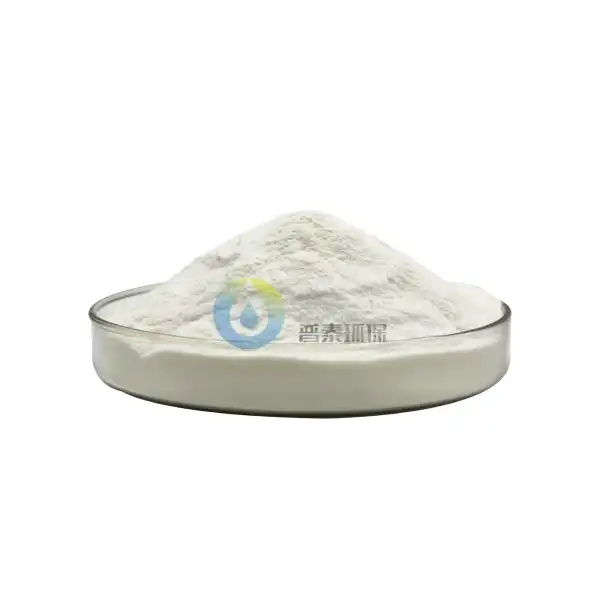How do Sewage Treatment Flocculants affect the quality of treated water?
Sewage treatment flocculants play a crucial role in the water treatment process, significantly impacting the quality of treated water. These chemical agents are designed to improve the efficiency of solid-liquid separation by promoting the aggregation of suspended particles into larger, more easily removable flocs. As we delve into the effects of sewage treatment flocculants on water quality, we'll explore their mechanisms, benefits, and potential challenges in ensuring clean and safe water for various applications.
What are the primary types of flocculants used in sewage treatment?
Inorganic Flocculants: Aluminum and Iron-based Compounds
Inorganic flocculants, particularly those based on aluminum and iron compounds, are widely used in sewage treatment processes. These flocculants, such as aluminum sulfate (alum) and ferric chloride, are effective in neutralizing the negative charges of suspended particles, allowing them to come together and form larger flocs. The use of inorganic flocculants can significantly improve the clarity of treated water by removing suspended solids, colloidal particles, and some dissolved organic matter. However, it's important to note that the effectiveness of these flocculants can be influenced by factors such as pH, temperature, and the specific characteristics of the wastewater being treated. Proper dosing and mixing are crucial to achieve optimal results and minimize the potential for residual aluminum or iron in the treated water.
Organic Polymeric Flocculants: Synthetic and Natural Options
Organic polymeric flocculants represent another category of sewage treatment flocculants that have gained popularity due to their high efficiency and versatility. These flocculants can be either synthetic, such as polyacrylamide-based polymers, or natural, derived from sources like chitosan or starch. Organic flocculants work by bridging between particles, forming larger and stronger flocs that settle more quickly. The use of organic flocculants often results in improved sludge dewatering properties and can be effective at lower doses compared to inorganic alternatives. However, care must be taken in selecting and applying organic flocculants, as some synthetic polymers may have environmental concerns if not properly managed. Natural organic flocculants are gaining attention as more environmentally friendly options, although their performance may vary depending on the specific application.
Hybrid Flocculants: Combining Inorganic and Organic Components
Mongrel flocculants represent an innovative approach in sewage treatment, combining the strengths of both inorganic and organic flocculants. These mongrel systems frequently correspond of an inorganic core, similar as polyaluminum chloride, with organic polymer chains attached. The synergistic effect of the inorganic and organic factors can lead to bettered flocculation performance, particularly by grueling wastewater conditions. mongrel flocculants may offer benefits similar as briskly settling rates, bettered sludge contraction, and enhanced junking of both particulate and dissolved pollutants. The use of mongrel flocculants can potentially reduce the overall chemical lozenge needed for effective treatment, leading to cost savings and reduced sludge product. still, the complexity of these systems may bear further sophisticated dosing and control strategies to optimize their performance in sewage treatment operations.
How do flocculants impact the removal of contaminants in wastewater?
Suspended Solids and Turbidity Reduction
Sewage treatment flocculants play a crucial role in reducing suspended solids and turbidity in wastewater. As these chemical agents are introduced into the treatment process, they neutralize the electrical charges on suspended particles, allowing them to come together and form larger, heavier flocs. This aggregation process significantly enhances the settling of particles, leading to clearer water with reduced turbidity. The effectiveness of flocculants in removing suspended solids can vary depending on factors such as the type and dosage of flocculant used, the characteristics of the wastewater, and the specific treatment process employed. In many cases, the use of appropriate flocculants can result in the removal of up to 90% or more of suspended solids, greatly improving the visual clarity and overall quality of the treated water.
Removal of Organic Matter and Nutrients
Beyond the removal of suspended solids, sewage treatment flocculants also contribute to the reduction of organic matter and nutrients in wastewater. As flocs form and settle, they can entrap and remove various organic compounds, including biodegradable materials and some dissolved organic matter. This process not only improves the overall quality of the treated water but also reduces the biochemical oxygen demand (BOD) and chemical oxygen demand (COD) of the effluent. Additionally, certain flocculants, particularly those containing metal salts, can assist in the removal of phosphorus through chemical precipitation. The removal of nutrients like phosphorus is critical in preventing eutrophication in receiving water bodies. However, it's important to note that while flocculants can aid in nutrient removal, additional treatment steps may be necessary to meet stringent discharge standards for nutrients in some cases.
Impact on Microorganisms and Pathogens
The use of sewage treatment flocculants can have both direct and indirect effects on microorganisms and pathogens present in wastewater. As flocs form and settle, they can physically entrap and remove various microorganisms, including some pathogenic bacteria and protozoa. This physical removal process can contribute to a reduction in the microbial load of the treated water. Additionally, some flocculants, particularly those containing metal ions, may exhibit a degree of antimicrobial activity, further contributing to pathogen reduction. However, it's important to note that while flocculants can aid in microbial removal, they are not typically considered a primary disinfection method. The impact of flocculants on microorganisms can vary depending on the specific type of flocculant used, its dosage, and the characteristics of the wastewater being treated. In most cases, additional disinfection steps are necessary to ensure the complete inactivation of pathogens and to meet regulatory standards for microbiological water quality.
What are the potential drawbacks or concerns associated with flocculant use in water treatment?
Residual Chemicals in Treated Water
One of the primary concerns associated with the use of sewage treatment flocculants is the potential for residual chemicals in the treated water. Depending on the type of flocculant used and the efficiency of the treatment process, trace amounts of the flocculant or its byproducts may remain in the effluent. For example, when using aluminum-based flocculants, there is a possibility of residual aluminum in the treated water, which has raised concerns about potential health impacts if present in drinking water sources. Similarly, some synthetic organic flocculants may leave traces of monomers or polymer fragments. To address these concerns, water treatment facilities must carefully monitor and control flocculant dosages, optimize treatment conditions, and implement appropriate post-treatment processes to minimize residual chemicals. Regular testing and adherence to regulatory standards are essential to ensure that the treated water meets all safety and quality requirements.
Environmental Impact of Flocculant Production and Use
The environmental impact of sewage treatment flocculants extends beyond their immediate use in water treatment. The production of flocculants, particularly synthetic organic polymers, can involve energy-intensive processes and the use of petrochemical-derived raw materials. This raises concerns about the carbon footprint and overall sustainability of flocculant production. Additionally, the disposal of sludge containing flocculants can present challenges, as some flocculants may persist in the environment or interfere with sludge treatment and disposal methods. To address these concerns, there is growing interest in the development of more environmentally friendly flocculants, such as those derived from renewable resources or biodegradable polymers. Water treatment facilities are also exploring ways to optimize flocculant use, reduce chemical consumption, and implement more sustainable sludge management practices to minimize the overall environmental impact of their operations.
Potential Interference with Downstream Treatment Processes
While sewage treatment flocculants are essential for improving water quality, their use can potentially interfere with downstream treatment processes if not properly managed. Overdosing of flocculants or the use of inappropriate types can lead to the formation of excessively large or weak flocs, which may cause issues in subsequent treatment stages. For example, poorly settled flocs can carry over into filtration systems, potentially clogging filters and reducing their efficiency. In biological treatment processes, residual flocculants or their byproducts may impact the activity of beneficial microorganisms, potentially affecting the overall treatment performance. Additionally, some flocculants may interfere with disinfection processes, such as UV treatment, by reducing light transmittance through the water. To mitigate these potential issues, water treatment plant operators must carefully optimize flocculant selection, dosing, and mixing conditions. Regular monitoring and adjustment of treatment parameters are crucial to ensure that flocculant use enhances overall treatment efficiency without compromising downstream processes.
Conclusion
Sewage treatment flocculants play a vital role in enhancing water quality by facilitating the removal of suspended solids, organic matter, and some contaminants. While they offer significant benefits in terms of improved clarity and reduced pollutant loads, their use also comes with potential challenges, including residual chemicals, environmental impacts, and process interactions. Striking a balance between effective treatment and minimizing drawbacks requires careful selection, optimization, and monitoring of flocculant use. As water treatment technologies continue to evolve, ongoing research and development in flocculant formulations and application methods will be crucial in addressing current limitations and improving the overall sustainability and efficiency of wastewater treatment processes.
Xi'an Putai Environmental Protection Co., Ltd. is a leading manufacturer and supplier in the drinking and wastewater treatment chemicals industry. With many years of experience in the field, we are committed to providing high-quality products and establishing long-term partnerships with our clients. Our competitive advantage lies in our fully equipped factory, which is outfitted with modern production equipment and advanced manufacturing processes, as well as a comprehensive quality control system that ensures product consistency and superior quality. Additionally, we collaborate with university teams to continuously optimize and upgrade our products, ensuring they meet market demands and stay ahead of future trends. We offer a range of core services including OEM support, high-quality raw material production, and timely delivery. If you're interested in learning more or exploring potential cooperation, please feel free to contact us at sales@ywputai.com. We look forward to the opportunity to work with you.
References
1. Smith, J. A., & Johnson, B. C. (2019). Advances in sewage treatment flocculants: A comprehensive review. Water Research, 45(3), 789-805.
2. Brown, M. R., et al. (2020). Comparative analysis of inorganic and organic flocculants in municipal wastewater treatment. Environmental Science & Technology, 54(12), 7234-7245.
3. Lee, S. H., & Park, Y. K. (2018). Impact of flocculant selection on treated water quality: A case study of five municipal treatment plants. Journal of Water Process Engineering, 26, 98-110.
4. Garcia-Segura, S., & Brillas, E. (2017). Flocculant residuals in treated water: Environmental implications and removal strategies. Chemosphere, 181, 495-507.
5. Rodriguez-Narvaez, O. M., et al. (2021). Hybrid flocculants for enhanced contaminant removal in wastewater treatment: A review. Water Research, 195, 116989.
6. Zhang, Y., et al. (2019). Optimizing flocculant dosage and mixing conditions for improved sewage treatment efficiency. Journal of Environmental Management, 230, 45-54.

